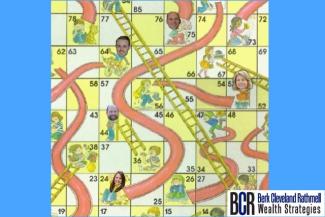
Reducing Your Life Insurance Costs by Creating a Policy Ladder
I have always believed that it is a rare occasion that insurance should be used for more than insuring something you can’t afford to lose. When considering life insurance, this means using term policies to cover income that your family can’t do without. Sure, on a rare occasion we will find a cash value policy useful for estate planning with tax issues. More often than not we find cash value policies being pushed by agents who get a much bigger commission and bought by families that don’t understand the costs built into them.
So you calculate the lump sum that you would need if you died today and you want your family to have the value of your income until your kids have graduated from college. Using term will cost much less, but can we get the cost down even more?
Obviously, the need to insure your earnings capacity goes down over time. At the beginning of your work life, you insure much of your entire career. Hopefully, as you convert your earnings to savings and investment, year after year, the need goes down—and so, too, does your total future earnings. Eventually, you reach the point where work is optional, and the need for coverage goes away. The net present value of the replacement amount for future earnings, therefore, theoretically should go down each year you work, save, and pay for a year of your family’s needs.
To match your insurance to your needs, you can create a term insurance ladder. Term insurance policies are sold in 5-year increments starting with ten-year policies.
Let’s say you are about to have your first child. You are planning to have three kids over six years. To provide college for all 3 and the lifestyle your spouse and you want the children to grow up without you would need $2 million to replace your income today. Thirty years from now you will have saved for retirement, paid for college, given them the lifestyle, and even if you are still working your spouse would be ok if your income disappeared.
You could purchase a $2 million 30 year policy, or you could reduce your cost with something like:
- $1 million 30 year policy
- $500 thousand 20 year policy
- $250 thousand 15 year policy
- $250 thousand 10 year policy
Not only will this cost less today but at each milestone a policy that you no longer need lapses and its cost will go away as well, leaving you with a lower cost in future years.
Be careful not to place too much of your need in the shorter terms because it will be harder to replace if you have more income, a larger family or another reason for more insurance when the first policy is lapsing.
-Marshall Rathmell-

